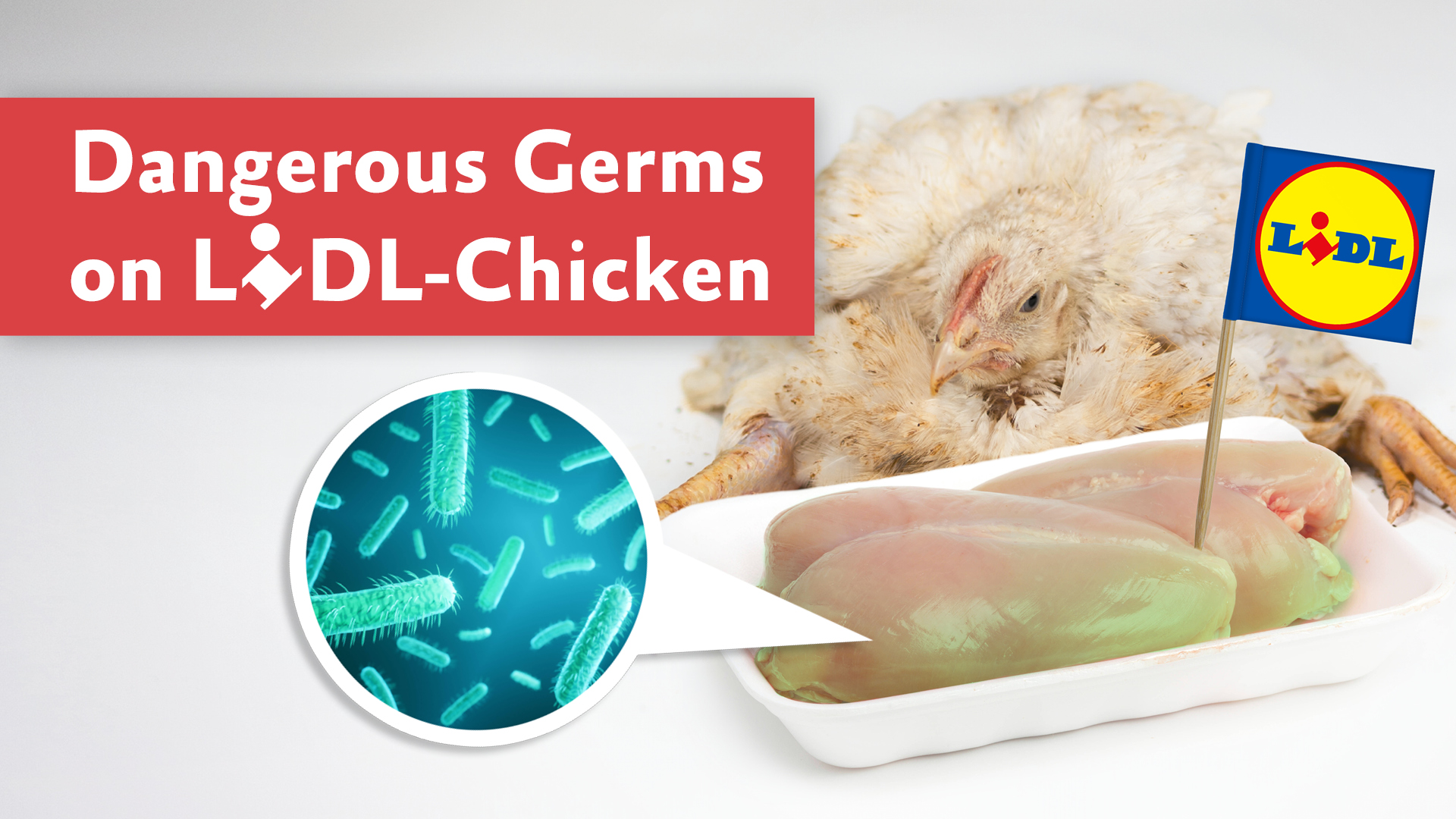It is YOUR actions that make a real difference: Say STOP and bring Lidl to its senses.
Potentially deadly germs are thriving in the sheds of Lidl suppliers.
In tests performed on 142 chicken samples taken from Lidl's store brands in five countries, a laboratory found antibiotic-resistant pathogens in every second sample.
You can change this: Sign the petition now and stop Lidl's irresponsibility.
This is the bitter reality of what chickens have to go through for Lidl:
Chickens breaking down. Workers mistreating chickens. Sick and injured chickens suffering visibly... crammed together by the thousands in bleak sheds.
Miserable husbandry conditions mean that dangerous germs thrive in the sheds. So say NO to animal cruelty committed for Lidl. Become active now. Sign the petition.

 Say STOP to Lidl
Say STOP to Lidl 
